
Keywords: population modification
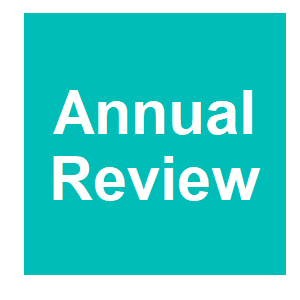
|
Manipulating the Destiny of Wild Populations Using CRISPRRaban R, Marshall JM, Hay BA, Akbari OS., Annual Reviews, 57:361-390. 2023.
Genetic biocontrol aims to suppress or modify populations of species to protect public health, agriculture, and biodiversity. Advancements in genome engineering technologies have fueled a surge in research in this field, with one gene editing technology, CRISPR, leading the ... Keywords: Australia, dengue, pathogen blocking, population modification, wolbachia |

|
Dengue rates drop after release of modified mosquitoes in ColombiaM. Lenharo, Nature, 2023.
Three cities in Colombia saw a dramatic fall in the incidence of dengue in the years following the introduction of mosquitoes carrying Wolbachia, a bacterium that prevents the insect from transmitting viruses. In neighbourhoods where the Wolbachia mosquitoes were well ... Keywords: Australia, dengue, pathogen blocking, population modification, wolbachia |

|
Conceptual risk assessment of mosquito population modification gene-drive systems to control malaria transmission: preliminary hazards list workshopsA. Kormos, G. Dimopoulos, E. Bier, G. C. Lanzaro, J. M. Marshall and A. A. James, Frontiers in Bioengineering and Biotechnology, 11. 2023.
The field-testing and eventual adoption of genetically-engineered mosquitoes (GEMs) to control vector-borne pathogen transmission will require them meeting safety criteria specified by regulatory authorities in regions where the technology is being considered for use and other ... Keywords: Australia, dengue, pathogen blocking, population modification, wolbachia |

|
The double-edged sword effect of expanding Wolbachia deployment in dengue endemic settingsM. G. Pavan, G. A. Garcia, M. R. David and R. Maciel-de-Freitas, The Lancet Regional Health - Americas, 27:100610. 2023.
We can use Brazil as a showcase to foresee and avoid a double-edged sword effect associated with Wolbachia releases. Insecticide resistance of native Ae. aegypti populations is spread worldwide (http://aedes.irmapper.com), and positive results should boost Wolbachia deployment in ... Keywords: Australia, dengue, pathogen blocking, population modification, wolbachia |
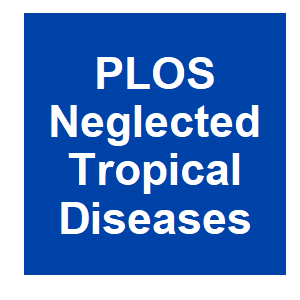
|
Wolbachia-mediated resistance to Zika virus infection in Aedes aegypti is dominated by diverse transcriptional regulation and weak evolutionary pressuresE. C. Boehm, A. S. Jaeger, H. J. Ries, D. Castañeda, A. M. Weiler, C. C. Valencia, J. Weger-Lucarelli, G. D. Ebel, S. L. O’Connor, T. C. Friedrich, M. Zamanian and M. T. Aliota, PLOS Neglected Tropical Diseases, 17:e0011674. 2023.
A promising candidate for arbovirus control and prevention relies on replacing arbovirus-susceptible Aedes aegypti populations with mosquitoes that have been colonized by the intracellular bacterium Wolbachia and thus have a reduced capacity to transmit arboviruses. This reduced ... Keywords: Australia, dengue, pathogen blocking, population modification, wolbachia |

|
Unleashing a New Weapon on the Mosquito: A MosquitoS. Nolen and E. Lutz, New York Times, 2023.
Five decades ago, entomologists confronting the many kinds of suffering that mosquitoes inflict on humans began to consider a new idea: What if, instead of killing the mosquitoes (a losing proposition in most places), you could disarm them? Even if you couldn’t keep them from ... Keywords: Australia, dengue, pathogen blocking, population modification, wolbachia |

|
The Gamble: Can Genetically Modified Mosquitoes End Disease?S. Nolen, New York Times, 2023.
The malaria situation in São Tomé and Príncipe, an African island nation with a population of 200,000, epitomizes the current challenge in the global struggle against the disease. The country is among the world’s least developed, and it has depended on foreign aid to fight ... Keywords: Australia, dengue, pathogen blocking, population modification, wolbachia |

|
Using Wolbachia to control rice planthopper populations: progress and challengesY. Guo, J. Shao, Y. Wu and Y. Li, Frontiers in Microbiology, 14. 2023.
Wolbachia have been developed as a tool for protecting humans from mosquito populations and mosquito-borne diseases. The success of using Wolbachia relies on the facts that Wolbachia are maternally transmitted and that Wolbachia-induced cytoplasmic incompatibility provides a ... Keywords: Australia, dengue, pathogen blocking, population modification, wolbachia |

|
Measuring the Impact of Genetic Heterogeneity and Chromosomal Inversions on the Efficacy of CRISPR-Cas9 Gene Drives in Different Strains of Anopheles gambiaePescod, Poppy Bevivino, Giulia Anthousi, Amalia Shelton, Ruth Shepherd, Josephine Lombardo, Fabrizio Nolan, Tony, The CRISPR Journal, 2023.
The human malaria vector Anopheles gambiae is becoming increasingly resistant to insecticides, spurring the development of genetic control strategies. CRISPR-Cas9 gene drives can modify a population by creating double-stranded breaks at highly specific targets, triggering copying ... Keywords: Australia, dengue, pathogen blocking, population modification, wolbachia |
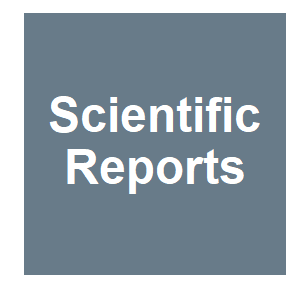
|
Quantifying the impact of Wolbachia releases on dengue infection in Townsville, AustraliaOgunlade, S. T. Adekunle, A. I. Meehan, M. T. McBryde, E. S., Scientific Reports, 13:14932. 2023.
From October 2014 to February 2019, local authorities in Townsville, North Queensland, Australia continually introduced Wolbachia-infected mosquitoes to control seasonal outbreaks of dengue infection. In this study, we develop a mathematical modelling framework to estimate the ... Keywords: Australia, dengue, pathogen blocking, population modification, wolbachia |

|
Molecular Evidence of Wolbachia Species in Wild-Caught Aedes albopictus and Aedes aegypti Mosquitoes in Four States of Northeast IndiaVinayagam, S. Nirmolia, T. Chetry, S. Kumar, N. P. Saini, P. Bhattacharyya, D. R. Bhowmick, I. P. Sattu, K. Patgiri, S. J., Journal of Tropical Medicine, 2023.
Wolbachia, a Gram-negative intracellular bacterium, naturally infects many arthropods, including mosquito vectors responsible for the spread of arboviral diseases such as Zika, chikungunya, and dengue fever. Certain Wolbachia strains are involved in inhibiting arbovirus ... Keywords: Australia, dengue, pathogen blocking, population modification, wolbachia |
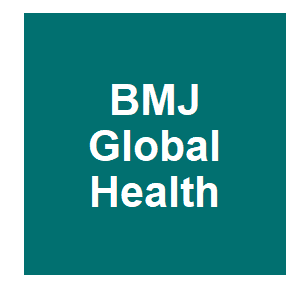
|
Does ignoring transmission dynamics lead to underestimation of the impact of interventions against mosquito-borne disease?S. Cavany, J. Huber, H. , A. Wieler, Q. M. Tran, M. Alkuzweny, M. Elliott, G. España, S. Moore, M. and T. A. Perkins, BMJ Global Health, 8:e012169. 2023.
New vector-control technologies to fight mosquito-borne diseases are urgently needed, the adoption of which depends on efficacy estimates from large-scale cluster-randomised trials (CRTs). The release of Wolbachia-infected mosquitoes is one promising strategy to curb dengue virus ... Keywords: Australia, dengue, pathogen blocking, population modification, wolbachia |
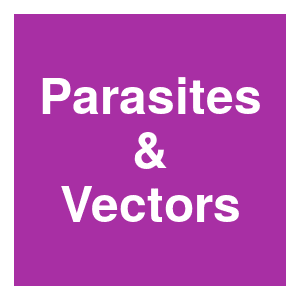
|
Wolbachia wMel strain-mediated effects on dengue virus vertical transmission from Aedes aegypti to their offspringK. Duong Thi Hue, D. da Silva Goncalves, V. Tran Thuy, L. Thi Vo, D. Le Thi, N. Vu Tuyet, G. Nguyen Thi, T. Huynh Thi Xuan, N. Nguyen Minh, P. Nguyen Thanh, S. Yacoub and C. P. Simmons, Parasites and Vectors, 16:308. 2023.
Background Dengue virus serotypes (DENV-1 to -4) can be transmitted vertically in Aedes aegpti mosquitoes. Whether infection with the wMel strain of the endosymbiont Wolbachia can reduce the incidence of vertical transmission of DENV from infected females to their offspring is ... Keywords: Australia, dengue, pathogen blocking, population modification, wolbachia |

|
The impact of predators of mosquito larvae on Wolbachia spreading dynamicsZ. Zhu, Y. Hui and L. Hu, Journal of Biological Dynamics, 17:2249024. 2023.
Dengue fever creates more than 390 million cases worldwide yearly. The most effective way to deal with this mosquito-borne disease is to control the vectors. In this work we consider two weapons, the endosymbiotic bacteria Wolbachia and predators of mosquito larvae, for combating ... Keywords: Australia, dengue, pathogen blocking, population modification, wolbachia |

|
Modeling shows emerging mosquito control approach might be largely resistant to warming temperaturesB. Yirka, Phys Org, 2023.
A team of epidemiologists and engineers at the University of California, working with a colleague from QIMR Berghofer Medical Research Institute, in Australia, has found via modeling that the use of the Wolbachia approach to slowing the spread of mosquito-borne diseases (MBDs) is ... Keywords: Australia, dengue, pathogen blocking, population modification, wolbachia |

|
Scientists are releasing disease-resistant mosquitoes. But heat waves could kill them.C. Harvey, Politico, 2023.
A new study, published Thursday in the journal Nature Climate Change, suggests that the disease-quashing bugs will likely survive for at least the next couple of decades. Their fate is less certain further into the future. The study focuses on a special insect-borne bacterium ... Keywords: Australia, dengue, pathogen blocking, population modification, wolbachia |

|
wMel replacement of dengue-competent mosquitoes is robust to near-term changeV. N. Vásquez, L. M. Kueppers, G. Rašić and J. M. Marshall, Nature Climate Change, 13:848-855. 2023.
Rising temperatures are impacting the range and prevalence of mosquito-borne diseases. A promising biocontrol technology replaces wild mosquitoes with those carrying the virus-blocking Wolbachia bacterium. Because the most widely used strain, wMel, is adversely affected by heat ... Keywords: Australia, dengue, pathogen blocking, population modification, wolbachia |

|
Susceptibility of Wolbachia mosquito control to temperature shiftsE. P. Caragata, Nature Climate Change, 13:767-768. 2023.
Vásquez and colleagues consider the potential impacts of increasing and variable temperatures on Wolbachia-based population-replacement interventions. Previous laboratory experiments have highlighted the temperature-sensitive nature of Wolbachia, with high average daily ... Keywords: Australia, dengue, pathogen blocking, population modification, wolbachia |

|
Lab-grown special mosquitoes can be the secret weapon to fight dengueM. Jain, MONGABAY, 2023.
The World Mosquito Program infects the Aedes aegypti, which carries the dengue virus, with a bacteria called Wolbachia, which reduces the transmission of dengue. Dengue infections are rapidly increasing because of factors like urbanisation and climate change. The World Health ... Keywords: Australia, dengue, pathogen blocking, population modification, wolbachia |
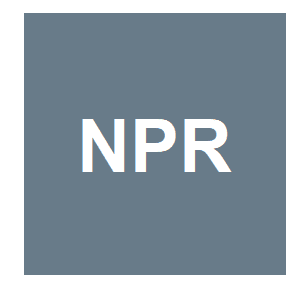
|
Mosquitoes spread malaria. These researchers want them to fight it insteadG. Brumfiel, NPR, 2023.
Mosquitoes carry malaria, which kills hundreds of thousands of people each year. Now some researchers are trying to use genetic engineering to make the pesky insects into allies in the fight against the disease. The approach is a radical departure from traditional ways of ... Keywords: Australia, dengue, pathogen blocking, population modification, wolbachia |

|
Mosquito-friendly gene drive may lead to a malaria-free futureAnonymous, LIFE TECHNOLOGY, 2023.
A gene drive is a genetic mechanism that allows a particular gene to spread rapidly through a population. In the case of malaria, scientists are working on developing a gene drive that would make mosquitoes resistant to the parasite that causes the disease. This would reduce the ... Keywords: Australia, dengue, pathogen blocking, population modification, wolbachia |

|
Dual effector population modification gene-drive strains of the African malaria mosquitoes, Anopheles gambiae and Anopheles coluzziiR. Carballar-Lejarazú, Y. Dong, T. B. Pham, T. Tushar, R. M. Corder, A. Mondal, H. M. Sánchez C, H.-F. Lee, J. M. Marshall, G. Dimopoulos and A. A. James, Proceedings of the National Academy of Sciences, 120:e2221118120. 2023.
Proposed genetic approaches for reducing human malaria include population modification, which introduces genes into vector mosquitoes to reduce or prevent parasite transmission. We demonstrate the potential of Cas9/guide RNA (gRNA)?based gene-drive systems linked to dual ... Keywords: Australia, dengue, pathogen blocking, population modification, wolbachia |

|
Mosquitoes made immune to malaria could help stamp out the diseaseC. Wilson, NewScientist, 2023.
Mosquitoes have been gene edited so they are immune to the parasites that cause malaria. If released into the wild, the genetic modification should spread through a population of mosquitoes because it contains a sequence known as a “gene drive”, which means all the modified ... Keywords: Australia, dengue, pathogen blocking, population modification, wolbachia |

|
The cellular lives of WolbachiaJ. Porter and W. Sullivan, Nature Reviews Microbiology, 2023.
Wolbachia are successful Gram-negative bacterial endosymbionts, globally infecting a large fraction of arthropod species and filarial nematodes. Efficient vertical transmission, the capacity for horizontal transmission, manipulation of host reproduction and enhancement of host ... Keywords: Australia, dengue, pathogen blocking, population modification, wolbachia |

|
MGSurvE: A framework to optimize trap placement for genetic surveillance of mosquito populationC. H. Sánchez, D. L. Smith and J. M. Marshall, bioRxiv, 2023.
Genetic surveillance of mosquito populations is becoming increasingly relevant as genetics-based mosquito control strategies advance from laboratory to field testing. Especially applicable are mosquito gene drive projects, the potential scale of which leads monitoring to be a ... Keywords: Australia, dengue, pathogen blocking, population modification, wolbachia |

|
Generation game: gene-edited mosquitos to fight malariaJ. Opara, Sci Dev Net, 2023.
Population-level changes in the genetic make-up of one of the world’s deadliest animals could provide a key in the fight against malaria, proponents of a radical new technology argue. So-called gene drive technology, where genetic changes are passed down through generations, ... Keywords: Australia, dengue, pathogen blocking, population modification, wolbachia |

|
Mosquito gene targeted RNAi studies for vector controlM. Yadav, N. Dahiya and N. Sehrawat, Functional and Integrative Genomics, 23:180. 2023.
Vector-borne diseases are serious public health concern. Mosquito is one of the major vectors responsible for the transmission of a number of diseases like malaria, Zika, chikungunya, dengue, West Nile fever, Japanese encephalitis, St. Louis encephalitis, and yellow fever. ... Keywords: Australia, dengue, pathogen blocking, population modification, wolbachia |

|
The boundary problem: Defining and delineating the community in field trials with gene drive organismsN. de Graeff, I. Pirson, R. van der Graaf, A. L. Bredenoord and K. R. Jongsma, Bioethics, 2023.
Despite widespread and worldwide efforts to eradicate vector-borne diseases such as malaria, these diseases continue to have an enormous negative impact on public health. For this reason, scientists are working on novel control strategies, such as gene drive technologies (GDTs). ... Keywords: Australia, dengue, pathogen blocking, population modification, wolbachia |

|
Mathematical modeling of the performance of wild and transgenic mosquitoes in malaria transmissionA. P. Wyse, A. J. B. dos Santos, J. D. Azevedo, A. C. de Meneses and V. M. D. Santos, Plos One, 18:23. 2023.
A mathematical model that simulates malaria transmission under the influence of transgenic mosquitoes refractory to malaria is presented in this paper. The zygosity of transgenic mosquitoes is taken into account and, consequently, the total population of mosquitoes is comprised ... Keywords: Australia, dengue, pathogen blocking, population modification, wolbachia |

|
Massive mosquito factory in Brazil aims to halt dengueM. Lenharo, Nature, 2023.
The non-profit World Mosquito Program (WMP) has announced that it will release modified mosquitoes in many of Brazil’s urban areas over the next 10 years, with the aim of protecting up to 70 million people from diseases such as dengue. Researchers have tested the release of ... Keywords: Australia, dengue, pathogen blocking, population modification, wolbachia |

|
Modelling the effect of migration on the localisation and spread of a gene driveC. Benjamin James and F.-L. Alexandre Jules Hen, bioRxiv, 2023.04.02.535303. 2023.
Gene drives have the potential to address pressing ecological issues. Through the super-Mendelian inheritance of a gene drive, a trait can be spread through a population even in spite of a fitness cost. This ability to spread is both its greatest quality and detractor. We may not ... Keywords: Australia, dengue, pathogen blocking, population modification, wolbachia |

|
First transgenic mosquito made in Africa by Transmission ZeroH. Dunning, Imperial College London, 2023.
Transmission Zero, a global scientific programme led by scientists at Imperial College London and the Ifakara Health Institute (IHI) of Tanzania, in partnership with the Tanzanian National Institute of Medical Research (NIMR), announces the generation of the first transgenic ... Keywords: Australia, dengue, pathogen blocking, population modification, wolbachia |

|
Modelling the effect of migration on the localisation and spread of a gene driveC. Benjamin and F.-L. Alexandre, bioRxiv, 2023.
Gene drives have the potential to address pressing ecological issues. Through the super-Mendelian inheritance of a gene drive, a trait can be spread through a population even in spite of a fitness cost. This ability to spread is both its greatest quality and detractor. We may not ... Keywords: Australia, dengue, pathogen blocking, population modification, wolbachia |

|
The Promise and Challenge of Genetic Biocontrol Approaches for Malaria EliminationS. James and M. Santos, Tropical Medicine and Infectious Disease, 2023.
Malaria remains an ongoing public health challenge, with over 600,000 deaths in 2021, of which approximately 96% occurred in Africa. Despite concerted efforts, the goal of global malaria elimination has stalled in recent years. This has resulted in widespread calls for new ... Keywords: Australia, dengue, pathogen blocking, population modification, wolbachia |

|
Enhancing the scalability of Wolbachia-based vector-borne disease management: time and temperature limits for storage and transport of Wolbachia-infected Aedes aegypti eggs for field releasesM. J. Allman, Y. H. Lin, D. A. Joubert, J. Addley-Cook, M. C. Mejía-Torres, C. P. Simmons, H. A. Flores and J. E. Fraser, Parasit Vectors, 16:108. 2023.
BACKGROUND: Introgression of the bacterial endosymbiont Wolbachia into Aedes aegypti populations is a biocontrol approach being used to reduce arbovirus transmission. This requires mass release of Wolbachia-infected mosquitoes. While releases have been conducted using a variety ... Keywords: Australia, dengue, pathogen blocking, population modification, wolbachia |

|
Genome evolution of dengue virus serotype 1 under selection by Wolbachia pipientis in Aedes aegypti mosquitoesD. Thi Hue Kien, K. Edenborough, D. da Silva Goncalves, T. Thuy Vi, E. Casagrande, H. Thi Le Duyen, V. Thi Long, L. Thi Dui, V. Thi Tuyet Nhu, N. Thi Giang, H. Thi Xuan Trang, E. Lee, I. a. Donovan-Banfield, H. Thi Thuy Van, N. Minh Nguyet, N. Thanh Phong, Virus Evolution, 9:vead016. 2023.
The introgression of antiviral strains of Wolbachia into Aedes aegypti mosquito populations is a public health intervention for the control of dengue. Plausibly, dengue virus (DENV) could evolve to bypass the antiviral effects of Wolbachia and undermine this approach. Here, we ... Keywords: Australia, dengue, pathogen blocking, population modification, wolbachia |

|
Hybrid incompatibilities in the anopheles gambiae species complexA. Kriezis, Imperial College London, 2023.
Malaria is an infectious disease caused by parasites of the genus Plasmodium which is responsible for approximately 400,000 deaths annually, primarily in sub-Saharan Africa. Malaria is transmitted by mosquitoes belonging to the Anopheles gambiae species complex. While progress ... Keywords: Australia, dengue, pathogen blocking, population modification, wolbachia |

|
Biopolitik: The Promise of Gene DriveS. Todi, Technopolitik, 2023.
Gene drives are genetic elements of an organism that are transmitted to progeny at higher than mendelian frequencies (>50%). Gene editing techniques such as CRISPR–Cas9 have made gene drives extremely efficient in laboratory settings and have shown the potential to reduce the ... Keywords: Australia, dengue, pathogen blocking, population modification, wolbachia |

|
A Zika virus-responsive sensor-effector system in Aedes aegyptiS. Basu, C. M. Reitmayer, S. Lumley, B. Atkinson, M. L. Schade-Weskott, S. Rooney, W. Larner, E. E. Montiel, R. Gutierrez-Lopez, E. Levitt, H. M. Munyanduki, A. M. E. Elrefaey, A. T. Clarke, S. Koit, E. Zusinaite, R. Fragkoudis, A. Merits and L. Alphey, bioRxiv, 2023.02.06.527261. 2023.
Zika virus (ZIKV) is a recently re-emerged flavivirus transmitted primarily through the bite of an infected mosquito, Aedes aegypti being the main vector. ZIKV infection is associated with a range of adverse effects; infection during pregnancy can lead to foetal abnormalities, ... Keywords: Australia, dengue, pathogen blocking, population modification, wolbachia |

|
Ethical dilemma: Should we get rid of mosquitoes?Talya Hackett, TED-Ed, 2023.
Mosquitoes are responsible for more human deaths every year than any other animal, but very few of the 3,500 mosquito species actually transmit deadly diseases to humans. Scientists have been conducting experiments using engineered technologies called gene drives that could ... Keywords: Australia, dengue, pathogen blocking, population modification, wolbachia |

|
Engineered Antiviral Sensor Targets Infected MosquitoesE. Dalla Benetta, A. J. Lopez-Denman, H.-H. Li, R. A. Masri, D. J. Brogan, M. Bui, T. Yang, M. Li, M. Dunn, M. J. Klein, S. Jackson, K. Catalan, K. R. Blasdell, P. Tng, I. Antoshechkin, L. S. Alphey, P. N. Paradkar and O. Akbari, bioRxiv, 2023.01.27.525922. 2023.
Escalating vector disease burdens pose significant global health risks, so innovative tools for targeting mosquitoes are critical. We engineered an antiviral strategy termed REAPER (vRNA Expression Activates Poisonous Effector Ribonuclease) that leverages the programmable ... Keywords: Australia, dengue, pathogen blocking, population modification, wolbachia |

|
Impact of randomised wmel Wolbachia deployments on notified dengue cases and insecticide fogging for dengue control in Yogyakarta CityC. Indriani, S. K. Tanamas, U. Khasanah, M. R. Ansari, Rubangi, W. Tantowijoyo, R. A. Ahmad, S. M. Dufault, N. P. Jewell, A. Utarini, C. P. Simmons and K. L. Anders, Glob Health Action, 16:2166650. 2023.
BACKGROUND: Releases of Wolbachia (wMel)-infected Aedes aegypti mosquitoes significantly reduced the incidence of virologically confirmed dengue in a previous cluster randomised trial in Yogyakarta City, Indonesia. Following the trial, wMel releases were extended to the untreated ... Keywords: Australia, dengue, pathogen blocking, population modification, wolbachia |

|
Dynamics of an impulsive reaction-diffusion mosquitoes model with multiple control measuresY. Li, H. Zhao and K. Wang, Mathematical Biosciences and Engineering, 20:775-806. 2023.
It is well-known that mosquito control is one of the effective methods to reduce and prevent the transmission of mosquito-borne diseases. In this paper, we formulate a reaction-diffusion impulsive hybrid model incorporating Wolbachia, impulsively spraying of insecticides, spatial ... Keywords: Australia, dengue, pathogen blocking, population modification, wolbachia |
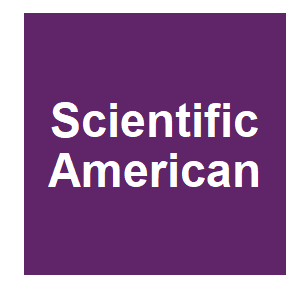
|
Gene Drives Could Fight Malaria and Other Global Killers but Might Have Unintended ConsequencesM. Cobb, Scientific American, 2023.
Every year more than 600,000 people die from mosquito-transmitted malaria, most of them children under age five. Some insects that are disease vectors, such as mosquitoes, are currently expanding their range around the world, bringing new threats. Genetic engineering can fix this ... Keywords: Australia, dengue, pathogen blocking, population modification, wolbachia |

|
Tolerance-conferring defensive symbionts and the evolution of parasite virulenceC. A. Smith and B. Ashby, bioRxiv, 2022.
Defensive symbionts in the host microbiome can confer protection from infection or reduce the harms of being infected by a parasite. Defensive symbionts are therefore promising agents of biocontrol that could be used to control or ameliorate the impact of infectious diseases. ... Keywords: Australia, dengue, pathogen blocking, population modification, wolbachia |

|
Wolbachia Biology, Mechanisms and Applications 2022David O'Brochta, GeneConvene Global Collaborative, 2022.
Intracellular and extracellular symbiotic/commensal bacteria have enormous potential when manipulated and deployed appropriately to serve as agents of control of insects and the pathogens they transmit. Wolbachia, an intracellular bacteria, is a well studied system and one that ... Keywords: Australia, dengue, pathogen blocking, population modification, wolbachia |

|
Wolbachia wAlbB inhibit dengue and Zika infection in the mosquito Aedes aegypti with an Australian backgroundL. E. Hugo, G. Rašić, A. J. Maynard, L. Ambrose, C. Liddington, C. J. E. Thomas, N. S. Nath, M. Graham, C. Winterford, B. M. C. R. Wimalasiri-Yapa, Z. Xi, N. W. Beebe and G. J. Devine, PLOS Neglected Tropical Diseases, 16:e0010786. 2022.
Biological control of mosquito vectors using the endosymbiotic bacteria Wolbachia is an emerging strategy for the management of human arboviral diseases. We recently described the development of a strain of Aedes aegypti infected with the Wolbachia strain wAlbB (referred to as ... Keywords: Australia, dengue, pathogen blocking, population modification, wolbachia |

|
Risk Assessment on the Release of Wolbachia-Infected Aedes aegypti in Yogyakarta, IndonesiaD. Buchori, A. Mawan, I. Nurhayati, A. Aryati, H. Kusnanto and U. K. Hadi, Insects, 13. 2022.
Wolbachia-infected Aedes aegypti is the latest technology that was developed to eliminate dengue fever. The Ministry of Research and Technology of the Republic of Indonesia (Kemenristekdikti) established an expert group to identify future potential risks that may occur over a ... Keywords: Australia, dengue, pathogen blocking, population modification, wolbachia |

|
Wolbachia-Virus interactions and arbovirus control through population replacement in mosquitoesT. H. Ant, M. V. Mancini, C. J. McNamara, S. M. Rainey and S. P. Sinkins, Pathogens and Global Health, 2022.
Following transfer into the primary arbovirus vector Aedes aegypti, several strains of the intracellular bacterium Wolbachia have been shown to inhibit the transmission of dengue, Zika, and chikungunya viruses, important human pathogens that cause significant morbidity and ... Keywords: Australia, dengue, pathogen blocking, population modification, wolbachia |
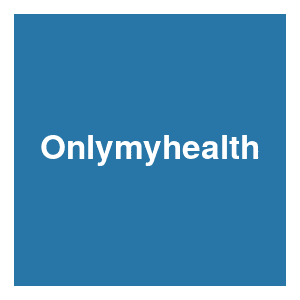
|
Research: Scientists Modify Mosquitoes That Can’t Spread MalariaN. Kharbanda, Onlymyhealth, 2022.
According to a research, scientists have found a way to genetically engineer mosquitoes with the capability to slow down the multiplication of malaria-causing parasites in their gut. This is an advance study, that can help in preventing the infecting of the disease in humans. The ... Keywords: Australia, dengue, pathogen blocking, population modification, wolbachia |
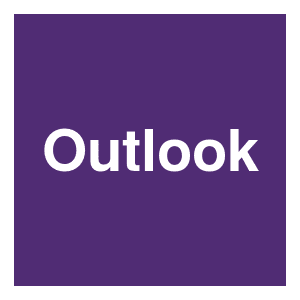
|
Explained: How Scientists Are Genetically modifying Mosquitoes To Reduce MalariaAnonymous, Outlook, 2022.
he Delhi High Court on Friday asked the state government to inform it within two weeks of the proposal of increasing the fine amount in mosquito breeding cases. The court last year took suo moto cognizance of the issue of large-scale mosquito breeding in the city, resulting in ... Keywords: Australia, dengue, pathogen blocking, population modification, wolbachia |

|
Explained: How scientists engineered mosquitoes that cannot spread malariaFP Explainers, Firstpost, 2022.
The world of science is reaching new heights. Scientists have now developed mosquitoes that will bite you but not cause malaria. The study was conducted by a team of researchers called Transmission: Zero at the Imperial College of London. The results of the research were ... Keywords: Australia, dengue, pathogen blocking, population modification, wolbachia |

|
Fitness costs of Wolbachia shift in locally-adapted Aedes aegypti mosquitoesP. A. Ross and A. A. Hoffmann, Environmental Microbiology, 2022.
Aedes aegypti mosquito eggs can remain quiescent for many months before hatching, allowing populations to persist through unfavorable conditions. Aedes aegypti infected with the Wolbachia strain wMel have been released in tropical and subtropical regions for dengue control. wMel ... Keywords: Australia, dengue, pathogen blocking, population modification, wolbachia |

|
Malaria-free mosquito engineered by scientistsGNA, MODERN GHANA, 2022.
Scientists have genetically modified the main malaria-carrying species of mosquito in sub-SaharanAfrica to slow the growth of malaria-causing parasites in their gut, preventing transmission of thedisease to humans. When the Anopheles gambiae takes a blood meal, it produces two ... Keywords: Australia, dengue, pathogen blocking, population modification, wolbachia |
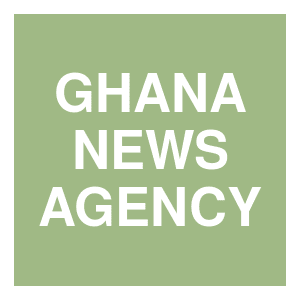
|
Malaria-free mosquito engineered by scientistsD. Davies, GHANA NEWS AGENCY, 2022.
Scientists have genetically modified the main malaria-carrying species of mosquito in sub-Saharan Africa to slow the growth of malaria-causing parasites in their gut, preventing transmission of the disease to humans. When the Anopheles gambiae takes a blood meal, it produces two ... Keywords: Australia, dengue, pathogen blocking, population modification, wolbachia |

|
Scientists stunt parasite growth to tackle malariaRSS24.news, RSS24.NEWS, 2022.
Loss of life, loss of livlihoods and homelessness have already afflicted these flood marooned refugees in Pakistan. Now these living conditions means they also face sickness and and without protection malaria is a major threat. Health agencies try to protect people against ... Keywords: Australia, dengue, pathogen blocking, population modification, wolbachia |

|
Scientists are manipulating the DNA of mosquitoes to fight the spread of malariaR. Min, EURONEWS.NEXT, 2022.
Scientists say they have managed to genetically modify mosquitoes so that they are unable to spread malaria, a disease that kills well over half a million people each year. The changes cause mosquitoes to live shorter lives, while the parasites inside them, which cause the fatal ... Keywords: Australia, dengue, pathogen blocking, population modification, wolbachia |

|
Externalities modulate the effectiveness of the Wolbachia release programmeE. E. Ooi and A. Wilder-Smith, The Lancet Infectious Diseases, 2022.
Despite the remarkable outcome in Yogyakarta, the wMel approach also has some challenges. In particular, the extent to which ecological, weather, and other external factors influence the dissemination and establishment of wMel in complex urban environments remains unclear. ... Keywords: Australia, dengue, pathogen blocking, population modification, wolbachia |

|
Estimating the effect of the wMel release programme on the incidence of dengue and chikungunya in Rio de Janeiro, Brazil: a spatiotemporal modelling studyG. Ribeiro dos Santos, B. Durovni, V. Saraceni, T. I. Souza Riback, S. B. Pinto, K. L. Anders, et al., The Lancet Infectious Diseases, 2022.
Summary Background Introgression of genetic material from species of the insect bacteria Wolbachia into populations of Aedes aegypti mosquitoes has been shown in randomised and non-randomised trials to reduce the incidence of dengue; however, evidence for the real-world ... Keywords: Australia, dengue, pathogen blocking, population modification, wolbachia |

|
Scientists engineer mosquitoes that cannot spread malariaJ. Dalton, Independen, 2022.
Scientists have engineered mosquitoes that cannot give humans malaria, saying their work could potentially eliminate the disease. Researchers at Imperial College London genetically modified the insects so that the growth of malaria-causing parasites in their guts was slowed. Keywords: Australia, dengue, pathogen blocking, population modification, wolbachia |

|
Scientists Engineer Mosquitoes That Can’t Transmit MalariaC. Murez, US News, 2022.
The fight against malaria could hinge on genetically engineered mosquitoes that have something called "gene drive."Researchers from the Transmission: Zero team at Imperial College London report that they have engineered mosquitoes that slow the growth in their gut of the ... Keywords: Australia, dengue, pathogen blocking, population modification, wolbachia |

|
Mosquitoes that can’t spread malaria engineered by scientists, 2022.Scientists have engineered mosquitoes that slow the growth of malaria-causing parasites in their gut, preventing transmission of the disease to humans The genetic modification causes mosquitoes to produce compounds in their guts that stunt the growth of parasites, meaning they ... Keywords: Australia, dengue, pathogen blocking, population modification, wolbachia |

|
Scientists engineer mosquitoes that can’t spread malariaS. Varshney, Gamacher Central, 2022.
Scientists have engineered mosquitoes that slow the growth of malaria-causing parasites in their gut, preventing transmission of the disease to humans. The genetic modification causes mosquitoes to produce compounds in their guts that stunt the growth of parasites, meaning they ... Keywords: Australia, dengue, pathogen blocking, population modification, wolbachia |

|
Mosquitoes with honeybee DNA could tame malariaR. Blakely, The Times, 2022.
A new form of genetically engineered mosquito could reduce the spread of malaria in Africa, a study suggests. The addition of DNA from a honeybee and genetic material from the African clawed frog prompt the new mosquitoes to produce compounds to stunt the growth of the parasite ... Keywords: Australia, dengue, pathogen blocking, population modification, wolbachia |

|
Genetically Engineered Mosquitoes Prevented the Growth of Malaria-causing Parasites in Their GutP. Mozter, Nature World News 2022, 2022.
Abstract: Scientists have created mosquitoes that inhibit the development of malaria-causing parasites in their stomachs, therefore decreasing disease transmission to people. The genetic change allows mosquitoes to create substances in their intestines that inhibit parasite ... Keywords: Australia, dengue, pathogen blocking, population modification, wolbachia |

|
Wolbachia strain wAlbB remains stable in Aedes aegypti over 15 years but exhibits genetic background-dependent variation in virus blockingX. Liang, C. H. Tan, Q. Sun, M. Zhang, P. J. Wong, M. I. Li, et al., PNAS Nexus, 2022.
The ability of the maternally transmitted endosymbiotic bacterium Wolbachia to induce cytoplasmic incompatibility (CI) and virus blocking makes it a promising weapon for combatting mosquito-borne diseases through either suppression or replacement of wild-type populations. Recent ... Keywords: Australia, dengue, pathogen blocking, population modification, wolbachia |

|
Mosquitoes are being genetically modified so they can’t spread malariaM. Le Page, New Scientist, 2022.
Gene editing mosquitoes so they die before malaria parasites can develop inside them could stop the spread of the deadly parasite entirely, Keywords: Australia, dengue, pathogen blocking, population modification, wolbachia |

|
Genetically-modified mosquitoes could ‘help wipe out malaria’S. Knapton, The Telegraph, 2022.
Mosquitoes that cannot spread malaria have been genetically engineered by British scientists, in a breakthrough that could help eliminate the disease. ... Keywords: Australia, dengue, pathogen blocking, population modification, wolbachia |

|
Gene drive mosquitoes can aid malaria elimination by retarding Plasmodium sporogonic developmentHoermann, Astrid, Habtewold, Tibebu, Selvaraj, Prashanth, Del Corsano, Giuseppe, Capriotti, Paolo, Inghilterra, Maria Grazia, Kebede, Temesgen M., Christophides, George K. and Windbichler, Nikolai, Science Advances, 2022.
Gene drives hold promise for the genetic control of malaria vectors. The development of vector population modification strategies hinges on the availability of effector mechanisms impeding parasite development in transgenic mosquitoes. We augmented a midgut gene of the malaria ... Keywords: Australia, dengue, pathogen blocking, population modification, wolbachia |

|
Scientists engineer mosquitoes that can’t spread malariaImperial College London, Phys Org, 2022.
Scientists have engineered mosquitoes that slow the growth of malaria-causing parasites in their gut, preventing transmission of the disease to humans. The genetic modification causes mosquitoes to produce compounds in their guts that stunt the growth of parasites, meaning they ... Keywords: Australia, dengue, pathogen blocking, population modification, wolbachia |

|
Extreme GM “extinction technology” of gene drives presented as “natural”GM Watch, GM Watch, 2022.
Now similar Orwellian moves are happening in the area of gene drives. A gene drive is a genetic engineering technology that forces a particular genetic modification through a population by changing the natural rules of inheritance, usually to ensure that it is increasingly – ... Keywords: Australia, dengue, pathogen blocking, population modification, wolbachia |

|
An optimal control problem for dengue transmission model with Wolbachia and vaccinationJ. Zhang, L. L. Liu, Y. Z. Li and Y. Wang, Communications In Nonlinear Science and Numerical Simulation, 116. 2022.
The release of Wolbachia-infected mosquitoes into the wild mosquitoes population is an excellent biological control strategy which can be effective against mosquito-borne infections. In this work, we propose a dengue transmission model that incorporates releasing Wolbachia into ... Keywords: Australia, dengue, pathogen blocking, population modification, wolbachia |

|
Changing mosquito genes, spreading bacteria: Science sees success vs dengueC. E. Baclig, INQUIRER.NET, 2022.
Wolbachia, according to WMP, are extremely common bacteria that occur naturally in 50 percent of insect species, including mosquitoes, fruit flies, moths, dragonflies, and butterflies. Aedes aegypti or dengue-carrying mosquitoes, however, do not normally carry Wolbachia. Studies ... Keywords: Australia, dengue, pathogen blocking, population modification, wolbachia |

|
Population replacement gene drive characteristics for malaria elimination in a range of seasonal transmission settings: a modelling studyS. Leung, N. Windbichler, E. A. Wenger, C. A. Bever and P. Selvaraj, Malaria Journal, 21:226. 2022.
BACKGROUND: Gene drives are a genetic engineering method where a suite of genes is inherited at higher than Mendelian rates and has been proposed as a promising new vector control strategy to reinvigorate the fight against malaria in sub-Saharan Africa. METHODS: Using an ... Keywords: Australia, dengue, pathogen blocking, population modification, wolbachia |

|
A population modification gene drive targeting both Saglin and Lipophorin disables Plasmodium transmission in Anopheles mosquitoesE. I. Green, E. Jaouen, D. Klug, R. P. Olmo, A. Gautier, S. A. Blandin and E. Marois, bioRxiv, 2022.07.08.499187. 2022.
Lipophorin is an essential, highly expressed lipid transporter protein that is secreted and circulates in insect hemolymph. We hijacked the Anopheles gambiae Lipophorin gene to make it co-express a single-chain version of antibody 2A10, which binds sporozoites of the malaria ... Keywords: Australia, dengue, pathogen blocking, population modification, wolbachia |

|
The Florida Keys Mosquito Control District & Oxitec Announce Launch of Next Phase of Ground-Breaking ProjectOxitec, Oxitec, 2022.
In a continuation of the FKMCD-Oxitec Mosquito Project, Oxitec and FKMCD announced that a new phase of the project (“Pilot D”) will be initiated on or after July 7th, 2022. This phase of the project will examine single-point releases of Oxitec’s male mosquitoes. In March ... Keywords: Australia, dengue, pathogen blocking, population modification, wolbachia |

|
Natural and Engineered Sex Ratio Distortion in InsectsA. Compton and Z. Tu, Frontiers in Ecology and Evolution, 10. 2022.
Insects have evolved highly diverse genetic sex-determination mechanisms and a relatively balanced male to female sex ratio is generally expected. However, selection may shift the optimal sex ratio while meiotic drive and endosymbiont manipulation can result in sex ratio ... Keywords: Australia, dengue, pathogen blocking, population modification, wolbachia |

|
Testing non-autonomous antimalarial gene drive effectors using self-eliminating drivers in the African mosquito vector Anopheles gambiaeD. A. Ellis, G. Avraam, A. Hoermann, C. A. S. Wyer, Y. X. Ong, G. K. Christophides and N. Windbichler, PLOS Genetics, 18:e1010244. 2022.
Author summary Gene drive is a method that allows the genetic modification of entire populations of harmful organisms. Their application to tackle invasive species, agricultural pests or insect disease vectors has been suggested. For example, they could reduce the capacity of ... Keywords: Australia, dengue, pathogen blocking, population modification, wolbachia |
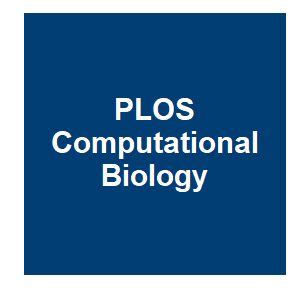
|
Spatial modelling for population replacement of mosquito vectors at continental scaleN. J. Beeton, A. Wilkins, A. Ickowicz, K. R. Hayes and G. R. Hosack, PLOS Computational Biology, 18:e1009526. 2022.
Malaria is one of the deadliest vector-borne diseases in the world. Researchers are developing new genetic and conventional vector control strategies to attempt to limit its burden. Novel control strategies require detailed safety assessment to ensure responsible and successful ... Keywords: Australia, dengue, pathogen blocking, population modification, wolbachia |

|
Wolbachia interacts with the microbiome to shape fitness-associated traits during seasonal adaptation in Drosophila melanogasterL. P. Henry, M. Fernandez, S. Wolf and J. Ayroles, bioRxiv, 2022.05.31.494239. 2022.
The microbiome contributes to many different host traits, but its role in host adaptation remains enigmatic. The fitness benefits of the microbiome often depend on ecological conditions, but fluctuations in both the microbiome and environment modulate these fitness benefits. ... Keywords: Australia, dengue, pathogen blocking, population modification, wolbachia |

|
Wolbachia 16S rRNA haplotypes detected in wild Anopheles stephensi in eastern EthiopiaE. Waymire, S. Duddu, S. Yared, D. Getachew, D. Dengela, S. R. Bordenstein, M. Balkew, S. Zohdy, S. R. Irish and T. E. Carter, Parasites and Vectors, 15:178. 2022.
About two out of three Ethiopians are at risk of malaria, a disease caused by the parasites Plasmodium falciparum and Plasmodium vivax. Anopheles stephensi, an invasive vector typically found in South Asia and the Middle East, was recently found to be distributed across eastern ... Keywords: Australia, dengue, pathogen blocking, population modification, wolbachia |

|
Local adaptation of Aedes aegypti mosquitoes to Wolbachia-induced fitness costsP. A. Ross and A. A. Hoffmann, bioRxiv, 2022.05.06.490959. 2022.
Aedes aegypti mosquito eggs can remain quiescent for many months before hatching, allowing populations to persist through unfavorable conditions. Aedes aegypti infected with the Wolbachia strain wMel have been released in tropical and subtropical regions for dengue control. wMel ... Keywords: Australia, dengue, pathogen blocking, population modification, wolbachia |

|
MIT Researchers Propose Using Genetically Modified Mice to Fight Lyme DiseaseK. Perrotte, Field and Stream, 2022.
In Massachusetts, researchers at MIT are proposing an experiment that would involve releasing genetically engineered mice into the native mouse population to ultimately reduce the prevalence of Lyme disease.Nantucket Island is the area proposed for the study, which has been years ... Keywords: Australia, dengue, pathogen blocking, population modification, wolbachia |
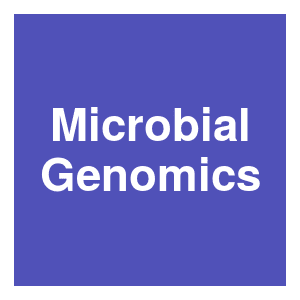
|
Wolbachia endosymbionts in two Anopheles species indicates independent acquisitions and lack of prophage elementsS. Quek, L. Cerdeira, C. L. Jeffries, S. Tomlinson, T. Walker, G. L. Hughes and E. Heinz, Microbial Genomics, 8. 2022.
Wolbachia is a genus of obligate bacterial endosymbionts that infect a diverse range of arthropod species as well as filarial nematodes, with its single described species, Wolbachia pipientis, divided into several ‘supergroups’ based on multilocus sequence typing. Wolbachia ... Keywords: Australia, dengue, pathogen blocking, population modification, wolbachia |

|
Aedes aegypti abundance and insecticide resistance profiles in the applying Wolbachia to eliminate dengue trialW. Tantowijoyo, S. K. Tanamas, I. Nurhayati, S. Setyawan, N. Budiwati, I. Fitriana, I. Ernesia, D. S. Wardana, E. Supriyati, E. Arguni, Y. Meitika, E. Prabowo, B. Andari, B. R. Green, L. Hodgson, E. Rancès, P. A. Ryan, S. L. O'Neill, K. L. Anders, M. R. A, PLOS Neglected Tropical Diseases, 16:e0010284. 2022.
The Applying Wolbachia to Eliminate Dengue (AWED) trial was a parallel cluster randomised trial that demonstrated Wolbachia (wMel) introgression into Ae. aegypti populations reduced dengue incidence. In this predefined substudy, we compared between treatment arms, the relative ... Keywords: Australia, dengue, pathogen blocking, population modification, wolbachia |

|
A metapopulation approach to identify targets for Wolbachia-based dengue controlA. Reyna-Lara, D. Soriano-Paños, J. H. Arias-Castro, H. J. Martínez and J. Gómez-Gardeñes, Chaos, 32:041105. 2022.
Over the last decade, the release of Wolbachia-infected Aedes aegypti into the natural habitat of this mosquito species has become the most sustainable and long-lasting technique to prevent and control vector-borne diseases, such as dengue, zika, or chikungunya. However, the ... Keywords: Australia, dengue, pathogen blocking, population modification, wolbachia |
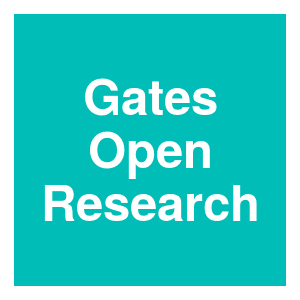
|
Environmental factors influence the local establishment of Wolbachia in Aedes aegypti mosquitoes in two small communities in central Vietnam [version 2]N. T. Hien, D. D. Anh, N. H. Le, N. T. Yen, T. V. Phong, V. S. Nam, T. N. Duong, N. B. Nguyen, D. T. T. Huong, L. Q. Hung, C. N. T. Trinh, N. V. Hoang, V. Q. Mai, L. T. Nghia, N. T. Dong, L. H. Tho, S. Kutcher, T. P. Hurst, J. L. Montgomery, M. Woolfit, E, Gates Open Research, 5:147. 2022.
Background: The wMel strain of Wolbachia has been successfully introduced into Aedes aegypti mosquitoes and subsequently shown to reduce transmission of dengue and other pathogens, under both laboratory and field conditions. Here we describe the entomological outcomes of wMel ... Keywords: Australia, dengue, pathogen blocking, population modification, wolbachia |

|
UC Davis — Malaria Gene Drive Feasibility AnalysisGood Ventures, Good Ventures, 2022.
Open Philanthropy recommended a grant of $10,248,967 over three years to UC Davis to support subsequent stages of a feasibility analysis of a potential test of gene drives for malaria control on the adjoining West African islands of São Tomé and Príncipe. The work, led by Dr. ... Keywords: Australia, dengue, pathogen blocking, population modification, wolbachia |

|
Special mosquitos to combat dengue fever in Binh DuongL. Phuong, VN Express, 2022.
Capsules containing mosquito eggs resistant to dengue fever viruses were released in southern Binh Duong's Thu Dau Mot Town on Thursday to help control the disease. The Wolbachia Project in southern Vietnam, conducted by the World Mosquito Program and collaborators, seeks to ... Keywords: Australia, dengue, pathogen blocking, population modification, wolbachia |

|
Symbionts and gene drive: two strategies to combat vector-borne diseaseG.-H. Wang, J. Du, C. Y. Chu, M. Madhav, G. L. Hughes and J. Champer, Trends in Genetics, 2022.
Mosquitoes bring global health problems by transmitting parasites and viruses such as malaria and dengue. Unfortunately, current insecticide-based control strategies are only moderately effective because of high cost and resistance. Thus, scalable, sustainable, and cost-effective ... Keywords: Australia, dengue, pathogen blocking, population modification, wolbachia |

|
Spatial modelling for population replacement of mosquito vectors at continental scaleN. J. Beeton, A. Wilkins, A. Ickowicz, K. R. Hayes and G. R. Hosack, bioRxiv, 2021.10.06.463299. 2022.
Malaria is one of the deadliest vector-borne diseases in the world. Researchers are developing new genetic and conventional vector control strategies to attempt to limit its burden. Novel control strategies require detailed safety assessment to ensure responsible and successful ... Keywords: Australia, dengue, pathogen blocking, population modification, wolbachia |
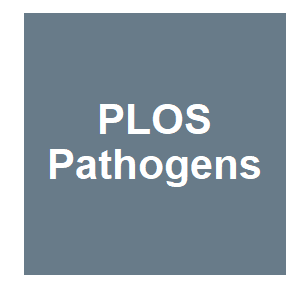
|
Differential viral RNA methylation contributes to pathogen blocking in Wolbachia-colonized arthropodsT. Bhattacharya, L. Yan, J. M. Crawford, H. Zaher, I. L. G. Newton and R. W. Hardy, PLoS Pathogens, 18:e1010393. 2022.
Arthropod endosymbiont Wolbachia pipientis is part of a global biocontrol strategy to reduce the replication of mosquito-borne RNA viruses such as alphaviruses. We previously demonstrated the importance of a host cytosine methyltransferase, DNMT2, in Drosophila and viral RNA as a ... Keywords: Australia, dengue, pathogen blocking, population modification, wolbachia |

|
A UC malaria initiative program receives grant for work researching genetically engineered mosquitoesS. Slater, The California Aggie, 2022.
Malaria, a mosquito-borne infectious disease, was discovered in 1880, and has remained widespread in tropical regions around the equator including parts of Africa, Asia and Latin America, resulting in thousands of deaths and a significant blow to economic development in these ... Keywords: Australia, dengue, pathogen blocking, population modification, wolbachia |

|
Gene drive mosquitoes can aid malaria elimination by retarding Plasmodium sporogonic developmentA. Hoermann, T. Habtewold, P. Selvaraj, G. Del Corsano, P. Capriotti, M. G. Inghilterra, K. M. Temesgen, G. K. Christophides and N. Windbichler, bioRxiv, 2022.02.15.480588. 2022.
Gene drives hold promise for the genetic control of malaria vectors. The development of vector population modification strategies hinges on the availability of effector mechanisms impeding parasite development in transgenic mosquitoes. We augmented a midgut gene of the malaria ... Keywords: Australia, dengue, pathogen blocking, population modification, wolbachia |

|
C-type lectin 4 regulates broad-spectrum melanization-based refractoriness to malaria parasitesM. L. Simões, Y. Dong, G. Mlambo and G. Dimopoulos, PLOS Biology, 20:e3001515. 2022.
Anopheles gambiae melanization-based refractoriness to the human malaria parasite Plasmodium falciparum has rarely been observed in either laboratory or natural conditions, in contrast to the rodent model malaria parasite Plasmodium berghei that can become completely melanized by ... Keywords: Australia, dengue, pathogen blocking, population modification, wolbachia |

|
Scientists find transmission chain-breaker, give new hope for fight against malariaANI, ANI, 2022.
A recent study, published online in 'PLoS Biology', has revealed that blocking a key protein found in Anopheles gambiae mosquitoes -- the principal vector for malaria transmission to humans in Africa could thwart infection with malaria parasites and thus prevent them from ... Keywords: Australia, dengue, pathogen blocking, population modification, wolbachia |

|
Lab-scale characterization and semi-field trials of Wolbachia Strain wAlbB in a Taiwan Wolbachia introgressed Ae. aegypti strainW. L. Liu, H. Y. Yu, Y. X. Chen, B. Y. Chen, S. N. Leaw, C. H. Lin, M. P. Su, L. S. Tsai, Y. Chen, S. H. Shiao, Z. Y. Xi, A. C. C. Jang and C. H. Chen, PLOS Neglected Tropical Diseases, 16:24. 2022.
Author summaryPrior to open field release, new genetic approaches that interfere with mosquito abilities and reduce mosquito population density require progressive evaluation both in the laboratory and contained field trials. Trials in contained outdoor systems are thus an ... Keywords: Australia, dengue, pathogen blocking, population modification, wolbachia |
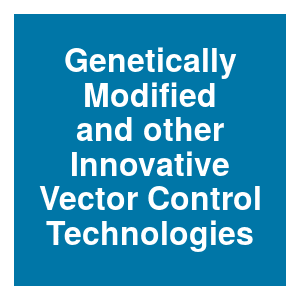
|
Wolbachia: Biological Control Strategy Against Arboviral DiseasesI. Mohanty, A. Rath and R. K. Hazra, Genetically Modified and other Innovative Vector Control Technologies, 2021.
Arboviral diseases like dengue, chikungunya, and Zika are among the major causes of mortality and morbidity in human population. The limited control methods together with lack of antiviral therapies and effective vaccines have paved way for new approaches. One such approach to ... Keywords: Australia, dengue, pathogen blocking, population modification, wolbachia |

|
Wolbachia Endosymbiont and Mosquito Vectors, with Emphasis on Lymphatic Filariasis EliminationI. P. Sunish, Genetically Modified and other Innovative Vector Control Technologies, 2021.
Wolbachia are maternally inherited intracellular bacteria, known to alter early development and mitotic processes in their hosts. They are frequently observed as a reproductive parasite, capable of inducing feminization, parthenogenesis, male killing, or cytoplasmic ... Keywords: Australia, dengue, pathogen blocking, population modification, wolbachia |

|
Genomic insertion locus and Cas9 expression in the germline affect CRISPR/Cas9-based gene drive performance in the yellow fever mosquito Aedes aegyptiW. R. Reid, J. Lin, A. E. Williams, R. Juncu, K. E. Olson and A. W. E. Franz, bioRxiv, 2021.12.08.471839. 2021.
The yellow fever mosquito Aedes aegypti is a major vector of arthropod-borne viruses, including dengue, chikungunya, and Zika. A novel approach to mitigate arboviral infections is to generate mosquitoes refractory to infection by overexpressing antiviral effector molecules. Such ... Keywords: Australia, dengue, pathogen blocking, population modification, wolbachia |

|
Gene drive that results in addiction to a temperature-sensitive version of an essential gene triggers population collapse in DrosophilaG. Oberhofer, T. Ivy and B. A. Hay, Proceedings of the National Academy of Sciences, 118:e2107413118. 2021.
One strategy for population suppression seeks to use gene drive to spread genes that confer conditional lethality or sterility, providing a way of combining population modification with suppression. Stimuli of potential interest could be introduced by humans, such as an otherwise ... Keywords: Australia, dengue, pathogen blocking, population modification, wolbachia |

|
High-resolution in situ analysis of Cas9 germline transcript distributions in gene-drive Anopheles mosquitoesG. Terradas, A. Hermann, A. A. James, W. McGinnis and E. Bier, G3-Genes Genomes Genetics, 2021.
Gene drives are programmable genetic elements that can spread beneficial traits into wild populations to aid in vector-borne pathogen control. Two different drives have been developed for population modification of mosquito vectors. The Reckh drive (vasa-Cas9) in Anopheles ... Keywords: Australia, dengue, pathogen blocking, population modification, wolbachia |

|
High Temperature Cycles Result in Maternal Transmission and Dengue Infection Differences Between Wolbachia Strains in Aedes aegyptiM. V. Mancini, T. H. Ant, C. S. Herd, J. Martinez, S. M. Murdochy, D. D. Gingell, E. Mararo, P. C. D. Johnson and S. P. Sinkins, mBio, e0025021. 2021.
Environmental factors play a crucial role in the population dynamics of arthropod endosymbionts, and therefore in the deployment of Wolbachia symbionts for the control of dengue arboviruses. The potential of Wolbachia to invade, persist, and block virus transmission depends in ... Keywords: Australia, dengue, pathogen blocking, population modification, wolbachia |

|
Population replacement gene drive characteristics for malaria elimination in a range of seasonal transmission settings: a modeling studyS. Leung, N. Windbichler, E. Wenger, C. Bever and P. Selvaraj, bioRxiv, 2021.11.01.466856. 2021.
Genetically engineering mosquitoes is a promising new vector control strategy to reinvigorate the fight against malaria in Sub-Saharan Africa. Using an agent-based model of malaria transmission with vector genetics, we examine the impacts of releasing population-replacement gene ... Keywords: Australia, dengue, pathogen blocking, population modification, wolbachia |

|
Modeling the efficacy of CRISPR gene drive for schistosomiasis controlR. E. Grewelle, J. Perez-Saez, J. Tycko, E. K. O. Namigai, C. G. Rickards and G. A. De Leo, bioRxiv, 2021.10.29.466423. 2021.
CRISPR gene drives could revolutionize the control of infectious diseases by accelerating the spread of engineered traits that limit parasite transmission in wild populations. While much effort has been spent developing gene drives in mosquitoes, gene drive technology in molluscs ... Keywords: Australia, dengue, pathogen blocking, population modification, wolbachia |

|
A decade of stability for wMel Wolbachia in natural Aedes aegypti populationsP. A. Ross, K. L. Robinson, Q. Yang, A. G. Callahan, T. L. Schmidt, J. K. Axford, M. P. Coquilleau, K. M. Staunton, M. Townsend, S. A. Ritchie, M.-J. Lau, X. Gu and A. A. Hoffmann, bioRxiv, 2021.10.27.466190. 2021.
Mosquitoes carrying Wolbachia endosymbionts are being released in many countries for arbovirus control. The wMel strain of Wolbachia blocks Aedes-borne virus transmission and can spread throughout mosquito populations by inducing cytoplasmic incompatibility. Aedes aegypti ... Keywords: Australia, dengue, pathogen blocking, population modification, wolbachia |

|
Novel Symbiotic Genome-Scale Model Reveals Wolbachia’s Arboviral Pathogen Blocking Mechanism in Aedes aegyptiN. E. Jiménez, Z. P. Gerdtzen, Á. Olivera-Nappa, J. C. Salgado and C. Conca, mBio, e0156321. 2021.Arboviral diseases such as Zika and Dengue have been on the rise mainly due to climate change, and the development of new treatments and strategies to limit their spreading is needed. The use of Wolbachia as an approach for disease control has motivated new research related to ... Keywords: Australia, dengue, pathogen blocking, population modification, wolbachia |

|
Spatial modelling for population replacement of mosquito vectors at continental scaleN. J. Beeton, A. Wilkins, A. Ickowicz, K. R. Hayes and G. R. Hosack, bioRxiv, 2021.10.06.463299. 2021.
We explore transmission of the gene drive between the subspecies, different hybridisation mechanisms, the effects of both local dispersal and potential wind-aided migration to the spread, and the development of resistance to the gene drive. We find that given best current ... Keywords: Australia, dengue, pathogen blocking, population modification, wolbachia |

|
Wolbachia-Conferred Antiviral Protection Is Determined by Developmental TemperatureE. Chrostek, N. Martins, M. S. Marialva and L. Teixeira, mBio, e0292320. 2021.
Overall, we show that Wolbachia-conferred antiviral protection is temperature dependent, being present or absent depending on the environmental conditions. This interaction likely impacts Wolbachia-host interactions in nature and, as a result, frequencies of host and symbionts in ... Keywords: Australia, dengue, pathogen blocking, population modification, wolbachia |

|
Assessment of fitness and vector competence of a New Caledonia wMel Aedes aegypti strain before field-releaseN. Pocquet, O. O’Connor, H. A. Flores, J. Tutagata, M. Pol, D. J. Hooker, C. Inizan, S. Russet, J. M. Duyvestyn, E. C. Pacidônio, D. Girault, D. da Silva Gonçalves, M. Minier, F. Touzain, E. Chalus, K. Lucien, F. Cheilan, T. Derycke, S. Laumond, C. P. Sim, PLOS Neglected Tropical Diseases, 15:e0009752. 2021.
Dengue represents a risk for almost half of the world’s population, especially throughout the tropics. In New Caledonia, dengue outbreaks have become more frequent in the past decade along with the recent circulation of chikungunya and Zika viruses. The opportunity to use the ... Keywords: Australia, dengue, pathogen blocking, population modification, wolbachia |
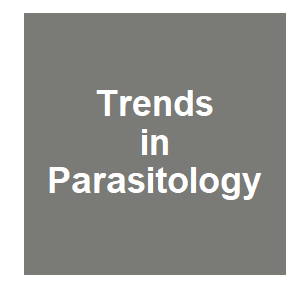
|
Mosquito transgenesis for malaria controlS. Dong, Y. Dong, M. L. Simões and G. Dimopoulos, Trends in Parasitology, 2021.
Malaria is one of the deadliest diseases. Because of the ineffectiveness of current malaria-control methods, several novel mosquito vector-based control strategies have been proposed to supplement existing control strategies. Mosquito transgenesis and gene drive have emerged as ... Keywords: Australia, dengue, pathogen blocking, population modification, wolbachia |

|
Identifying Sites for Testing Modified Mosquitoes as a Strategy to Eradicate MalariaA. Fell, UC Davis News, 2021.
In a newly published article in the journal Evolutionary Applications Professor Greg Lanzaro and his team at the Vector Genetics Laboratory, UC Davis School of Veterinary Medicine, set forth a framework for the selection of field sites in Africa best suited for testing ... Keywords: Australia, dengue, pathogen blocking, population modification, wolbachia |

|
Gene drives gaining speedE. Bier, Nature Reviews Genetics, 2021.
Gene drives are selfish genetic elements that are transmitted to progeny at super-Mendelian (>50%) frequencies. Recently developed CRISPR–Cas9-based gene-drive systems are highly efficient in laboratory settings, offering the potential to reduce the prevalence of vector-borne ... Keywords: Australia, dengue, pathogen blocking, population modification, wolbachia |
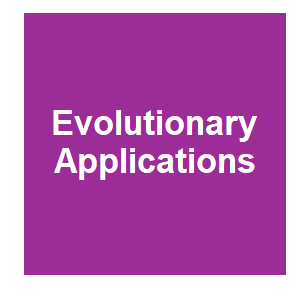
|
Selection of sites for field trials of genetically engineered mosquitoes with gene driveG. C. Lanzaro, M. Campos, M. Crepeau, A. Cornel, A. Estrada, H. Gripkey, Z. Haddad, A. Kormos and S. Palomares, Evolutionary Applications, 15. 2021.
Novel malaria control strategies using genetically engineered mosquitoes (GEMs) are on the horizon. Population modification is one approach wherein mosquitoes are engineered with genes rendering them refractory to the malaria parasite, Plasmodium falciparum, coupled with a ... Keywords: Australia, dengue, pathogen blocking, population modification, wolbachia |

|
Combating mosquito-borne diseases using genetic control technologiesG.-H. Wang, S. Gamez, R. R. Raban, J. M. Marshall, L. Alphey, M. Li, J. L. Rasgon and O. S. Akbari, Nature Communications, 12:4388. 2021.
Mosquito-borne diseases, such as dengue and malaria, pose significant global health burdens. Unfortunately, current control methods based on insecticides and environmental maintenance have fallen short of eliminating the disease burden. Scalable, deployable, genetic-based ... Keywords: Australia, dengue, pathogen blocking, population modification, wolbachia |
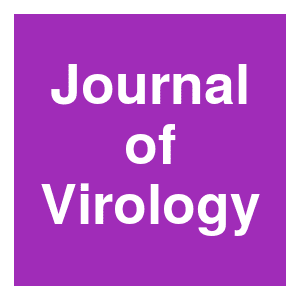
|
Targeting Conserved Sequences Circumvents the Evolution of Resistance in a Viral Gene Drive against Human CytomegalovirusM. Walter, R. Perrone, E. Verdin and F. Goodrum, Journal of Virology, 95:e00802-21. 2021.
Gene drives are genetic systems designed to efficiently spread a modification through a population. They have been designed almost exclusively in eukaryotic species, especially in insects. We recently developed a CRISPR-based gene drive system in herpesviruses that relies on ... Keywords: Australia, dengue, pathogen blocking, population modification, wolbachia |

|
Using gene drives to control malariaA. Fell, Daily News, 2021.
A group of UC scientists led by Greg Lanzaro, professor of pathology, microbiology and immunology in the UC Davis School of Veterinary Medicine, recently completed an analysis of a strategy aimed at eliminating malaria from Africa using genetically engineered mosquitoes. ... Keywords: Australia, dengue, pathogen blocking, population modification, wolbachia |

|
Population modification strategies for malaria vector control are uniquely resilient to observed levels of gene drive resistance allelesG. C. Lanzaro, H. M. Sánchez C, T. C. Collier, J. M. Marshall and A. A. James, BioEssays, 2021.
Cas9/guide RNA (gRNA)-based gene drive systems are expected to play a transformative role in malaria elimination efforts., whether through population modification, in which the drive system contains parasite-refractory genes, or population suppression, in which the drive system ... Keywords: Australia, dengue, pathogen blocking, population modification, wolbachia |

|
Stable high-density and maternally inherited Wolbachia infections in Anopheles moucheti and Anopheles demeilloni mosquitoesT. Walker, S. Quek, C. L. Jeffries, J. Bandibabone, V. Dhokiya, R. Bamou, M. Kristan, L. A. Messenger, A. Gidley, E. A. Hornett, E. R. Anderson, C. Cansado-Utrilla, S. Hegde, C. Bantuzeko, J. C. Stevenson, N. F. Lobo, S. C. Wagstaff, C. A. Nkondjio, S. R., Current Biology, 31:2310. 2021.
Wolbachia, a widespread bacterium that can reduce pathogen transmission in mosquitoes, has recently been reported to be present in Anopheles (An.) species. In wild populations of the An. gambiae complex, the primary vectors of Plasmodium malaria in Sub-Saharan Africa, Wolbachia ... Keywords: Australia, dengue, pathogen blocking, population modification, wolbachia |

|
Using Wolbachia to Eliminate Dengue: Will the Virus Fight Back?M. Edenborough Kathryn, A. Flores Heather, P. Simmons Cameron, E. Fraser Johanna and C. Pierson Ted, Journal of Virology, 95:e02203-20. 2021.
Recent fieldtrials havedemonstratedthatdengue incidence can besubstantially reduced by introgressing strains of the endosymbiotic bacterium Wolbachia into Aedes aegypti mosquito populations. This strategy relies on Wolbachia reducing the susceptibility of Ae. aegypti to ... Keywords: Australia, dengue, pathogen blocking, population modification, wolbachia |

|
Vector control: Discovery of Wolbachia in malaria vectorsP. A. Ross and A. A. Hoffmann, Current Biology, 31:R738-R740. 2021.
Wolbachia bacteria are being widely released for suppression of dengue transmitted by Aedes mosquitoes. Walker, Quek, Jeffries and colleagues present robust evidence for natural Wolbachia infections in malaria-vectoring Anopheles mosquitoes, paving the way for new ... Keywords: Australia, dengue, pathogen blocking, population modification, wolbachia |

|
The origin of island populations of the African malaria mosquito, Anopheles coluzziiM. Campos, M. Hanemaaijer, H. Gripkey, T. C. Collier, Y. S. Lee, A. J. Cornel, J. Pinto, D. Ayala, H. Rompao and G. C. Lanzaro, Communications Biology, 4:9. 2021.
Anopheles coluzzii is a major malaria vector throughout its distribution in west-central Africa. Here we present a whole-genome study of 142 specimens from nine countries in continental Africa and three islands in the Gulf of Guinea. This sample set covers a large part of this ... Keywords: Australia, dengue, pathogen blocking, population modification, wolbachia |

|
Selection of Sites for Field Trials of Genetically Engineered Mosquitoes with Gene DriveG. C. Lanzaro, M. Campos, M. Crepeau, A. Cornel, A. Estrada, H. Gripkey, Z. Haddad, A. Kormos, S. Palomares and W. Sharpee, bioRxiv, 2021.04.28.441877. 2021.
Novel malaria control strategies using genetically engineered mosquitoes (GEMs) are on the horizon. Population modification is one approach wherein mosquitoes are engineered with genes rendering them refractory to the malaria parasite coupled with a low-threshold, Cas9-based gene ... Keywords: Australia, dengue, pathogen blocking, population modification, wolbachia |
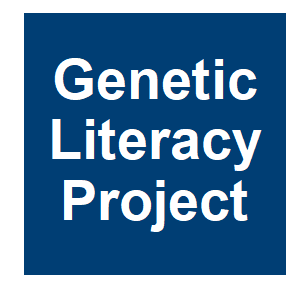
|
CRISPR may help curb malaria by altering a mosquito’s gut genes, new study suggestsCornell Alliance for Science, Genetic Literacy Project, 2021.
Altering a mosquito’s gut genes to make them spread antimalarial genes to the next generation of their species shows promise as an approach to curb malaria, suggests a preliminary study published in eLife. The study is the latest in a series of steps toward using CRISPR-Cas9 ... Keywords: Australia, dengue, pathogen blocking, population modification, wolbachia |

|
Eliminating malaria via a simple genetic modificationS. Gunn, Front Line Genomics, 2021.
Despite decades worth of research and efforts, data from 2015 onwards suggests that there has been no significant progress in reducing global malaria cases. Every year, around 400,00 people die from malaria, with over 90% of cases being within sub-Saharan Africa. The rise of ... Keywords: Australia, dengue, pathogen blocking, population modification, wolbachia |

|
This Malaria Preventing Mosquito Is Not A GMO But Is A Science Boost For Nature – Will Activists Want To Block It?H. Campbell, science 2.0, 2021.
Mosquitoes like Aedes aegypti don't have any value ecologically. If Thanos snapped them out of existence tomorrow there is nothing they do that won't immediately be taken up by 3,000 other mosquito species, not to mention 25,000 bee species when it comes to pollination. The ... Keywords: Australia, dengue, pathogen blocking, population modification, wolbachia |
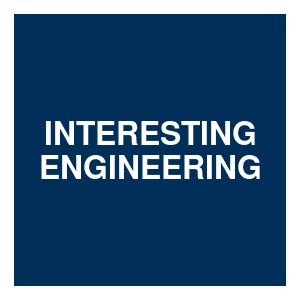
|
Breeding Malaria Out: Scientists Engineer Mosquitos to Spread Antimalaria GenesL. Papadopoulos, INTERSTING ENGINEERING, 2021.
According to the Centers for Disease Control and Prevention (CDC), malaria is a "serious and sometimes fatal disease caused by a parasite that commonly infects a certain type of mosquito which feeds on humans." There are four types of malaria parasites: Plasmodium falciparum, P. ... Keywords: Australia, dengue, pathogen blocking, population modification, wolbachia |
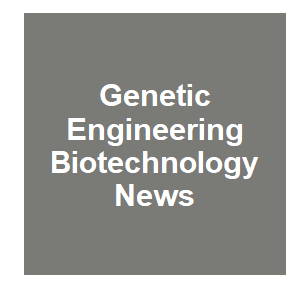
|
Curbing Malaria’s Spread by Genetic EngineeringAnonymous, Genetic Engineering & Biotechnology News, 2021.
There is an urgent need to find new ways to combat the growing mosquito resistance to pesticides and malaria parasite resistance to antimalarial drugs. Gene drives are being tested as a new approach. In a new study, researchers from the Imperial College London reported that their ... Keywords: Australia, dengue, pathogen blocking, population modification, wolbachia |

|
New genetic modification could cut malaria spreadStaff Writers, MALAYSIA NOW, 2021.
Altering a mosquito’s gut genes to make them spread antimalarial genes to the next generation of their species shows promise as an approach to curb malaria, suggests a preliminary study published in eLife on Tuesday. The study is the latest in a series of steps being taken ... Keywords: Australia, dengue, pathogen blocking, population modification, wolbachia |

|
Researchers Using Mutant Mosquitoes To End Malaria, Which Kills 4 Lakh Per YearM. Mohanti, India Times, 2021.
Every year, more than 22 crore people get infected with malaria and more than 4 lakh die because of it. In fact, in 2019, nearly half of the world's population was at risk of malaria. According to WHO, infants or children aged under 5 years are the most vulnerable group, ... Keywords: Australia, dengue, pathogen blocking, population modification, wolbachia |

|
Evidence for natural hybridization and novel Wolbachia strain superinfections in the Anopheles gambiae complex from GuineaC. L. Jeffries, C. Cansado-Utrilla, A. H. Beavogui, C. Stica, E. K. Lama, M. Kristan, S. R. Irish and T. Walker, Royal Society Open Science, 8:18. 2021.
Wolbachia, a widespread bacterium which can influence mosquito-borne pathogen transmission, has recently been detected within Anopheles (An.) species that are malaria vectors in Sub-Saharan Africa. Although studies have reported Wolbachia strains in the An. gambiae complex, ... Keywords: Australia, dengue, pathogen blocking, population modification, wolbachia |

|
Genetically modified mosquitoes for better healthD. Devis, COSMOS, 2021.
One method of preventing these mosquito-born diseases is to use insecticides to kill the mozzies and remove them, but sometimes this only works as a short term solution, or has unintended devasting effects on the ecosystem. Another method for decreasing the number of ... Keywords: Australia, dengue, pathogen blocking, population modification, wolbachia |

|
Quantifying the risk of vector-borne disease transmission attributable to genetically modified vectorsG. R. Hosack, A. Ickowicz and K. R. Hayes, Royal Society Open Science, 8:201525. 2021.
The relative risk of disease transmission caused by the potential release of transgenic vectors, such as through sterile insect technique or gene drive systems, is assessed with comparison with wild-type vectors. The probabilistic risk framework is demonstrated with an assessment ... Keywords: Australia, dengue, pathogen blocking, population modification, wolbachia |

|
Exploring Gene Drive Technologies in Agriculture, Biodiversity and Human DiseaseThe GBIRd Partnership and The GeneConvene Global Collaborative, Gene Drive Research Forum, 2021.
The GBIRd Partnership and The GeneConvene Global Collaborative recently collaborated through The Gene Drive Research Forum, to create and produce an engaging conversation between Drs. Fred Gould and Charles Godfray about gene drive technologies – the potential benefits and ... Keywords: Australia, dengue, pathogen blocking, population modification, wolbachia |

|
CRISPR and the splice to survive: New gene-editing technology could be used to save species from extinction—or to eliminate them.E. Kolbert, New Yorker, 2021.
About a year ago, not long before the pandemic began, I paid a visit to the center, which is an hour southwest of Melbourne. The draw was an experiment on a species of giant toad known familiarly as the cane toad. The toad was introduced to Australia as an agent of pest control, ... Keywords: Australia, dengue, pathogen blocking, population modification, wolbachia |

|
Next-generation tools to control biting midge populations and reduce pathogen transmissionP. Shults, L. W. Cohnstaedt, Z. N. Adelman and C. Brelsfoard, Parasites and Vectors, 14:31. 2021.
Biting midges of the genus Culicoides transmit disease-causing agents resulting in a significant economic impact on livestock industries in many parts of the world. Localized control efforts, such as removal of larval habitat or pesticide application, can be logistically ... Keywords: Australia, dengue, pathogen blocking, population modification, wolbachia |

|
Mosquito Sexual Selection and Reproductive Control ProgramsL. J. Cator, C. A. S. Wyer and L. C. Harrington, Trends in Parasitology, 37:330-339. 2021.
The field of mosquito mating biology has experienced a considerable expansion in the past decade. Recent work has generated many key insights about specific aspects of mating behavior and physiology. Here, we synthesize these findings and classify swarming mosquito systems as ... Keywords: Australia, dengue, pathogen blocking, population modification, wolbachia |

|
Control of malaria-transmitting mosquitoes using gene drivesT. Nolan, Philosophical Transactions of the Royal Society B: Biological Sciences, 376:20190803. 2020.
In this article, I will discuss the relative merits of this type of gene drive, as well as barriers to its technical development and to its deployment in the field as malaria control. This article is part of the theme issue ‘Novel control strategies for mosquito-borne ... Keywords: Australia, dengue, pathogen blocking, population modification, wolbachia |
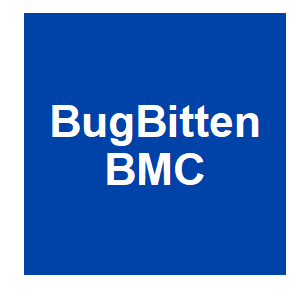
|
Mosquito population modification: the drive to malaria eradicationA. A. James, BugBitten BMC, 2020.
We have had considerable success in the past demonstrating that we can use modern molecular biological and insect transgenesis tools to make genes that prevent mosquitoes from passing on parasites (see 1 and 2). We have focused most recently on laboratory experiments to find ways ... Keywords: Australia, dengue, pathogen blocking, population modification, wolbachia |

|
The promise of CRISPR and gene drive systems to end malaria in AfricaE. Gomez-Diaz, ARRIGE ORG, 2020.
Presentation by Elena Gómez Díaz (IPBLN-CSIC, Granada, Spain) at the ARRIGE 2020 meeting on "The promise of CRISPR and gene drive systems to end malaria in Africa". Discussion is included at the end of the Ruud de Maagd presentation.https://youtu.be/te3MJ8EZoes Keywords: Australia, dengue, pathogen blocking, population modification, wolbachia |

|
Brave New Planet: Reshaping Nature Through Gene DrivesE. Lander, Brave New Planet, 2020.
A new technology, called gene drives, has the power to spread any genetic instructions you wish across an entire animal or plant species in the wild. It might let us restore ecosystems ravaged by invasive species, or help species adapt to climate change. And, it might save ... Keywords: Australia, dengue, pathogen blocking, population modification, wolbachia |

|
Gene drive blocks malaria transmission in mosquitoeslabonline, labonline, 2020.
Employing a strategy known as ‘population modification’, which involves using a CRISPR-Cas9 gene drive system to introduce genes preventing parasite transmission into mosquito chromosomes, University of California (UC) researchers have made a major advance in the use of ... Keywords: Australia, dengue, pathogen blocking, population modification, wolbachia |
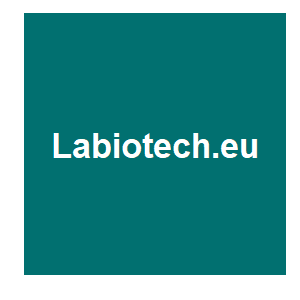
|
Gene Drives: A Controversial Tool to Fight MalariaH. Albert, LABIOTECH.eu, 2020.
The possibility of creating gene drives was introduced into the scientific community in 2003 by Austin Burt, a professor at Imperial College London. Burt was studying ‘selfish genes’ that can copy themselves into a specific target DNA sequence. He suggested that these genes, ... Keywords: Australia, dengue, pathogen blocking, population modification, wolbachia |

|
A gene-drive rescue system for the modification of malaria mosquito populationsA. Adolfi, Nature Research Bioengineering Community, 2020.
Mosquito populations can now be reliably modified using 1) antimalarial molecules that block parasite development and 2) a CRISPR-based gene drive system that mediates their rapid spreading across the vector population. Keywords: Australia, dengue, pathogen blocking, population modification, wolbachia |

|
UC researchers pioneer more effective method of blocking malaria transmission in mosquitoesUCI, UCI News, 2020.
University of California, Irvine postdoctoral researcher Adriana Adolfi, in collaboration with colleagues at UCI, UC Berkeley and UC San Diego, followed up on the group’s pioneering effort to develop CRISPR-based gene drive systems for making mosquito vectors resistant to ... Keywords: Australia, dengue, pathogen blocking, population modification, wolbachia |

|
Efficient population modification gene-drive rescue system in the malaria mosquito Anopheles stephensiA. Adolfi, V. M. Gantz, N. Jasinskiene, H.-F. Lee, K. Hwang, G. Terradas, E. A. Bulger, A. Ramaiah, J. B. Bennett, J. J. Emerson, J. M. Marshall, E. Bier and A. A. James, Nature Communications, 11:5553. 2020.
Here, we develop a recoded gene-drive rescue system for population modification of the malaria vector, Anopheles stephensi, that relieves the load in females caused by integration of the drive into the kynurenine hydroxylase gene by rescuing its function. Non-functional resistant ... Keywords: Australia, dengue, pathogen blocking, population modification, wolbachia |

|
Engineered Gene Drives: State of Research Webinar Series by The GeneConvene Global Collaborative September-October 2020David O'Brochta and Hector Quemada, GeneConvene Global Collaborative, 2020.
A series of technical webinars on engineered gene drive technology research and development given by leading researchers in the field. Keywords: Australia, dengue, pathogen blocking, population modification, wolbachia |

|
Viral gene drive in herpesvirusesM. Walter and E. Verdin, Nature Communications, 11:4884. 2020.
Here, we report on a gene drive system that allows the spread of an engineered trait in populations of DNA viruses and, in particular, herpesviruses. Keywords: Australia, dengue, pathogen blocking, population modification, wolbachia |
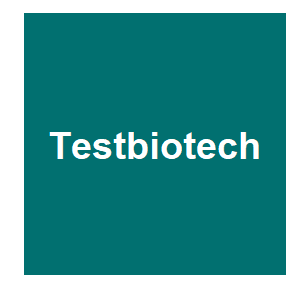
|
Risks of releasing gene drives mosquitoes – a possible future scenarioTestbiotech, Testbiotech, 2020.
Genetically engineering the genome of an organism with gene drive means that it will be replicated in every following generation. This allows the altered gene to spread rapidly throughout natural populations, which may be decimated or even eradicated. The video contains both ... Keywords: Australia, dengue, pathogen blocking, population modification, wolbachia |

|
A CRISPR homing gene drive targeting a haplolethal gene removes resistance alleles and successfully spreads through a cage populationJ. Champer, E. Yang, E. Lee, J. Liu, A. G. Clark and P. W. Messer, Proceedings of the National Academy of Sciences, 202004373. 2020.
Here, we present a CRISPR homing drive that was able to successfully spread to all individuals in a laboratory cage study in Drosophila melanogaster without any apparent evolution of resistance. Keywords: Australia, dengue, pathogen blocking, population modification, wolbachia |

|
GeneConvene Global Collaborative Webinar SeriesDavid O'Brochta and Hector Quemada, GeneConvene Global Collaborative, 2020.
This is a series of public scientific and technical seminars by researchers actively involved in the research and development of engineered gene drive and related systems. Presentations will be aimed at other researchers and scientists, highlighting the latest investigations in ... Keywords: Australia, dengue, pathogen blocking, population modification, wolbachia |

|
Anthony James / Mosquito ModificationBig Picture Science, SETI Institute, 2020.
Anthony James, vector biologist at the University of California, Irvine, describeshow we might genetically modify mosquitoes to make them unable to pass malaria on to humans. Keywords: Australia, dengue, pathogen blocking, population modification, wolbachia |

|
Next-generation gene drive for population modification of the malaria vector mosquito, Anopheles gambiaeR. Carballar-Lejarazú, C. Ogaugwu, T. Tushar, A. Kelsey, T. B. Pham, J. Murphy, H. Schmidt, Y. Lee, G. C. Lanzaro and A. A. James, Proceedings of the National Academy of Sciences, 202010214. 2020.
We show here that the Cas9/guide RNA-based gene-drive components of a genetically-engineered malaria mosquito vector, Anopheles gambiae, achieve key target product profile requirements for efficacy and performance. Keywords: Australia, dengue, pathogen blocking, population modification, wolbachia |

|
Engineered Reproductively Isolated Species Drive Reversible Population ReplacementA. Buchman, I. Shriner, T. Yang, J. Liu, I. Antoshechkin, J. M. Marshall, M. W. Perry and O. S. Akbari, bioRxiv, 2020.08.09.242982. 2020.
Engineered reproductive species barriers are useful for impeding gene flow and driving desirable genes into wild populations in a reversible threshold-dependent manner. We engineer multiple reproductively isolated SPECIES and demonstrate their threshold-dependent gene drive ... Keywords: Australia, dengue, pathogen blocking, population modification, wolbachia |

|
Gene Drive Webinars -ENSSER, CSS, VDW and SCEuropean Network of Scientists for Social and Environmental Responsibility, , 2020.
This series of 5 Webinars by some of the authors of the interdisciplinary Gene Drive Report (2019) and were organised by four organisations of independent scientists: the European Network of Scientists for Social and Environmental Responsibility (ENSSER), Critical Scientists ... Keywords: Australia, dengue, pathogen blocking, population modification, wolbachia |

|
Converting endogenous genes of the malaria mosquito into simple non-autonomous gene drives for population replacementA. Hoermann, S. Tapanelli, P. Capriotti, E. K. G. Masters, T. Habtewold, G. K. Christophides and N. Windbichler, bioRxiv, 2020.
Here we explore how minimal genetic modifications of endogenous mosquito genes can convert them directly into non-autonomous gene drives without disrupting their expression. Keywords: Australia, dengue, pathogen blocking, population modification, wolbachia |

|
Gene editing and the war against malariaE. Bier and E. Sobber, American Scientist, 102:162. 2020.
Malaria is a devastating disease transmitted from person to person by mosquitoes. It kills more than 400,000 people per year, more than half of those deaths being children 5 years old or younger. CRISPR (clustered regularly interspaced short palindromic repeats) is a new ... Keywords: Australia, dengue, pathogen blocking, population modification, wolbachia |

|
Engineering a minimal gene drive system for integral replacement in Drosophila melanogasterA. Nash, Imperial College London, 2020.
Gene drives represent a powerful tool for the control of vector-borne diseases. By suppressing or replacing vector populations, laboratory studies have highlighted the potential for this group of tools to make a powerful impact on the burden of zoonotic disease. Current genetic ... Keywords: Australia, dengue, pathogen blocking, population modification, wolbachia |
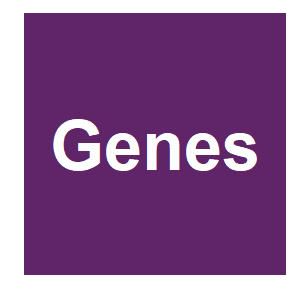
|
Biomphalaria glabrata Granulin Increases Resistance to Schistosoma mansoni Infection in Several Biomphalaria Species and Induces the Production of Reactive Oxygen Species by HaemocytesJ. R. Hambrook, A. A. Gharamah, E. A. Pila, S. Hussein and P. C. Hanington, Genes, 11:12. 2019.
In this study, we demonstrate that in vivo addition of Biomphalaria glabrata pro-granulin (BgGRN) can reduce Schistosoma mansoni infection success in numerous Biomphalaria sp. when challenged with different S. mansoni strains. We also demonstrate that cleavage of BgGRN into ... Keywords: Australia, dengue, pathogen blocking, population modification, wolbachia |

|
Malaysia Wolbachia trials: Battling dengue and other mosquito-borne viruses, 2019.Keywords: Australia, dengue, pathogen blocking, population modification, wolbachia |

|
Possible replacement of malaria mosquitoesS. Avery Jones, Transactions of The Royal Society of Tropical Medicine and Hygiene, 51:469-470. 1957.
Sir,--The purpose of this letter is to draw the attention of research workers in control of mosquito colonies to the possible value of investigating the factors governing the infection of mosquitoes with parasites of human malaria. If a strain of a vector species could be ... Keywords: Australia, dengue, pathogen blocking, population modification, wolbachia |

Contact
David O’Brochta
Foundation for the
National Institutes of Health
geneconvenevi@fnih.org
RSS

